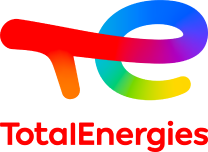News
Paris, November 10, 2020 – After more than two years of joint research, Total, Lawrence Livermore National Laboratory (LLNL) and Stanford University release GEOSX, an open source simulator for large-scale geological carbon dioxide (CO2) storage.
GEOSX was developed using advanced new technologies in high-performance computing and applied mathematics and aims to improve the management and safety of geological CO2 repositories. Its computing performance is unmatched to date.
The open-source nature of GEOSX aims to ensure a high level of transparency, sharing and community support to pave the way for the large-scale development of Carbon Capture, Utilization and Storage (CCUS) technologies.
"We are proud of the development of GEOSX, the first tool able to simulate the geological storage of CO2 at the gigaton scale. Total researchers contributed their experience in high-performance computing and geosciences. We are making its source code openly available to provide the scientific community the means to participate in the development of CCUS,” said Marie-Noëlle Semeria, Total's Chief Technology Officer. “GEOSX positions Total, Lawrence Livermore National Laboratory and Stanford as technological leaders in the simulation of CO2 geological storage, a major lever for achieving carbon neutrality.”
“GEOSX combines breakthrough scientific computing and high-performance technologies that will allow Total and the community to accelerate the implementation of future large-scale storage projects, necessary to achieve carbon neutrality objectives on a global scale,” said Professor Hamdi Tchelepi, Chairman of Energy Resources Engineering Department and the project’s lead research scientist for Stanford. “The innovations resulting from our joint research program open the door to a new era for the modelling of geological storage of CO2.”
“We are excited to be working with Total and Stanford to support widespread deployment of carbon capture, utilization, and storage projects. Climate change is a global challenge, and we view CCUS as a critical component in the transition to a low-carbon economy,” said Pat Falcone, LLNL’s deputy director for Science and Technology. “It is also thrilling to see the cutting-edge capabilities being enabled by our next-generation supercomputing platforms and gratifying to have created this new capability as part of such an effective relationship between the industrial sector, the research community and a national laboratory.”
► Click here to access the GEOSX source code ◄
About the MAELSTROM project
GEOSX is the first major outcome of the five-year FC-MAELSTROM research project launched in 2018 by Total, Stanford University School of Earth, Energy and Environmental Sciences, and LLNL. It draws on each partner's 20-plus years of expertise in simulation and high-performance computing research.
About Total Research & Development
Total is deploying an ambitious R&D program, worth nearly $1 billion a year. Total R&D relies on a network of more than 4,300 employees in 18 research centers around the world, as well as on numerous partnerships with universities, start-ups and industrial companies. Its investments are mainly devoted to a low-carbon energy mix (40%) as well as to digital, safety and the environment, operational efficiency and new products. It files more than 200 patents every year.
About Total
Total is a broad energy company that produces and markets fuels, natural gas and electricity. Our 100,000 employees are committed to better energy that is safer, more affordable, cleaner and accessible to as many people as possible. Active in more than 130 countries, our ambition is to become the responsible energy major.
* * * * *
Total Contacts
- Media Relations: +33 1 47 44 46 99 l [email protected] l @TotalPress
- Investor Relations: +44 (0)207 719 7962 l [email protected]
Cautionary Note
This press release, from which no legal consequences may be drawn, is for information purposes only. The entities in which TOTAL SE directly or indirectly owns investments are separate legal entities. TOTAL SE has no liability for their acts or omissions. In this document, the terms “Total”, “Total Group” and Group are sometimes used for convenience. Likewise, the words “we”, “us” and “our” may also be used to refer to subsidiaries in general or to those who work for them.
This document may contain forward-looking information and statements that are based on a number of economic data and assumptions made in a given economic, competitive and regulatory environment. They may prove to be inaccurate in the future and are subject to a number of risk factors. Neither TOTAL SE nor any of its subsidiaries assumes any obligation to update publicly any forward-looking information or statement, objectives or trends contained in this document whether as a result of new information, future events or otherwise.



